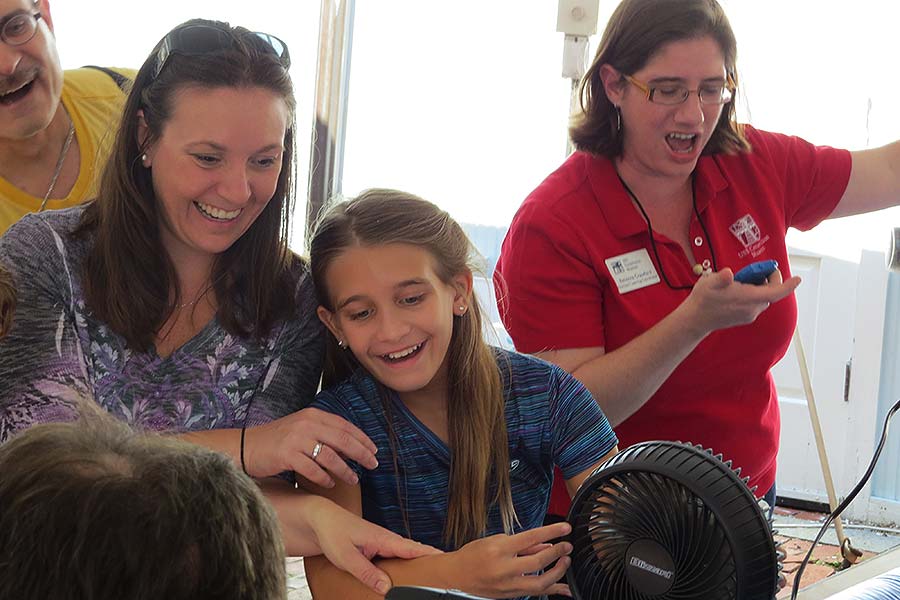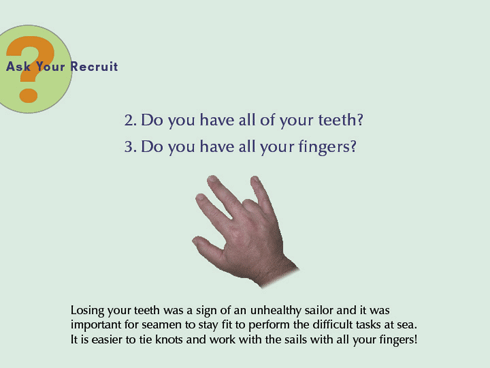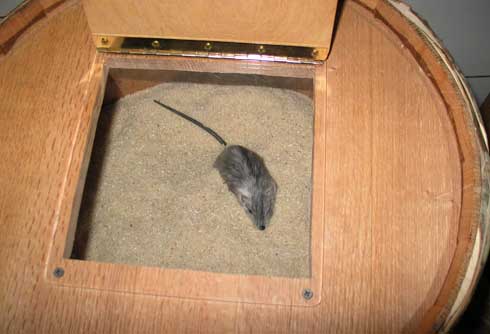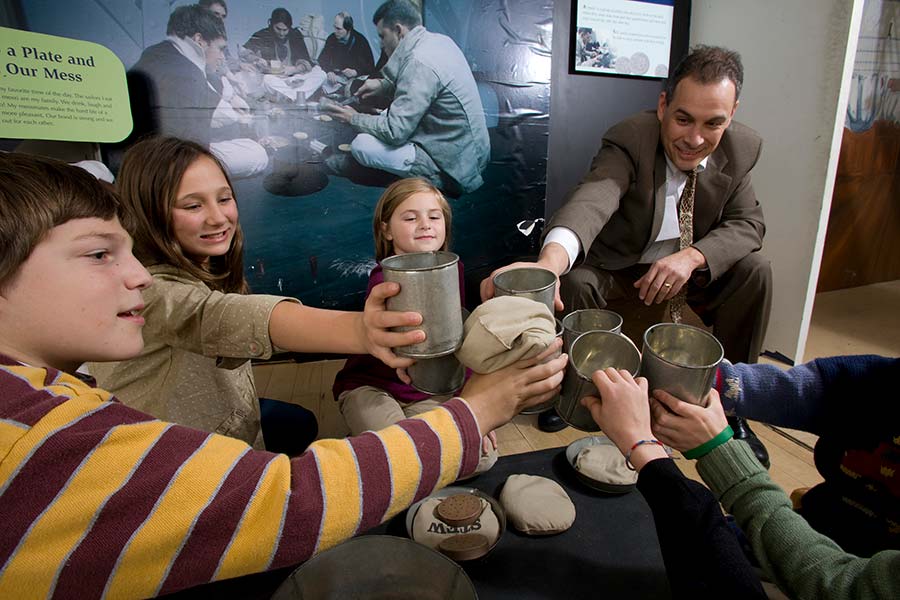Why it is Important
Families want to have fun. “When families are asked to describe what they find valuable about a museum experience, they often reference the fact that they can enjoy themselves and have a good time.” 1 Providing social, enjoyable, and informative experiences for the whole family supports bonding and learning. Furthermore, research shows that a child’s play leads directly to positive social, cultural, and educational growth.2 Adult involvement in a child’s play increases the impact of that play.3 Intentional design and facilitation helps caregivers and parents utilize these fun and playful experiences to benefit family learning. When families are having fun, they are more receptive to learning.
Put it into Practice
Consider what you can do as designers and facilitators to create a judgement-free zone that encourages play. Lightening up content and incorporating surprises, games, and competition are successful ways of facilitating family fun and play.
Use Games and Competition
Games and competition promote fun and play among all ages. At the USS Constitution Museum, Built to Win challenges families to build a ship that out-runs and out-guns the others. The addition of timed competition encourages families to work together toward a common goal. And it is fun for both adults and kids.

Lightening Up
When content is delivered in a fun way, kids are engaged and adults feel more comfortable facilitating their child’s play. This doesn’t mean “dumbing down” the content or that learning won’t happen. At the USS Constitution Museum, we think of it as “lightening up.” Word choice and a sense of humor are key in delivering content in a fun way. This applies not only to facilitators whose verbal and nonverbal cues can set a tone of fun, but also exhibit text.
In the recruiting interactive of our All Hands on Deck exhibition, we listened to our visitors to create a fun experience. When asked, visitors said that they wanted more questions and a game-like element. Our exhibit now features score cards to emphasize play and the game element, and phrases questions in a fun and lighthearted way. Instead of asking a potential recruit if he or she is healthy, the question first asks if a recruit has all of his or her fingers and teeth. Family members learn that health was a concern on ships like Constitution, but this information is delivered in a fun way that encourages conversation. These small but intentional details go a long way toward helping families laugh and learn together.

Incorporate a Surprise
A surprise element hidden within an exhibit or program delights families. These discoveries can trigger conversation and encourage visitors to slow down and take a closer look. Children and adults share joy in these unexpected elements and they are rewards that encourage close exploration. At the USS Constitution Museum, we’ve been able to surprise families in both programs and exhibits. The “pop!” of an Alka-SeltzerTM cannon in Ready, Aim, Fire! or a toy rat hiding in a barrel of food in All Hands on Deck are small, surprising details that keep the experiences fun and prompt conversation.

